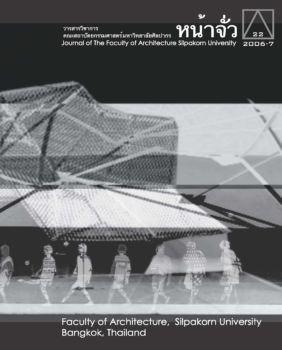The Configuration Map of Bangkok: The Road Network and its Relationship to the City’s Evolution
คำสำคัญ:
Bangkok, road network development, spatial compartmentisation, Space Syntax, spatial structure, spatial configurationบทคัดย่อ
Bangkok is a subject of many studies, but very few investigated it as a spatial configurational system composing of roads. A study by Kasemsook (2003) on three stages of the central road network’s expansion of Bangkok is one of those. By focusing on the central area, this study, however, excludes the Bangkok periphery areas in which the speed of spatial evolution has most intensely developed.
The study presented in this paper is an attempt to carry on to continuing the investigation on the Bangkok configuration towards the city’s edges. How has the city’s configurational system evolved when the recently developed areas on the edges are included in the analysis? Are the changes similar to or different from those found in the central road network expansion? What if the areas on two sides of the Chao Phraya River were separately analysed, what would be the haracteristics
of the individual systems? To do so, Geographic Information System (GIS) platform together with Space Syntax program were used as an analytical tool.
The findings repeat some similar patterns to those of the former study, but also reveal a currently unique Bangkok’s urban development. Overall, the city’s spatial system becomes more segregated as the city evolves. The centre of Bangkok has gradually shifted as the city grows, and two new sub-centres emerge. There is strong evidence on the compartmentisation process of the local area development at the edges, leading to spatial segregation as well as subjected to social exclusion. All these are an indication on the socio-spatial transformation process of Bangkok nowadays.





